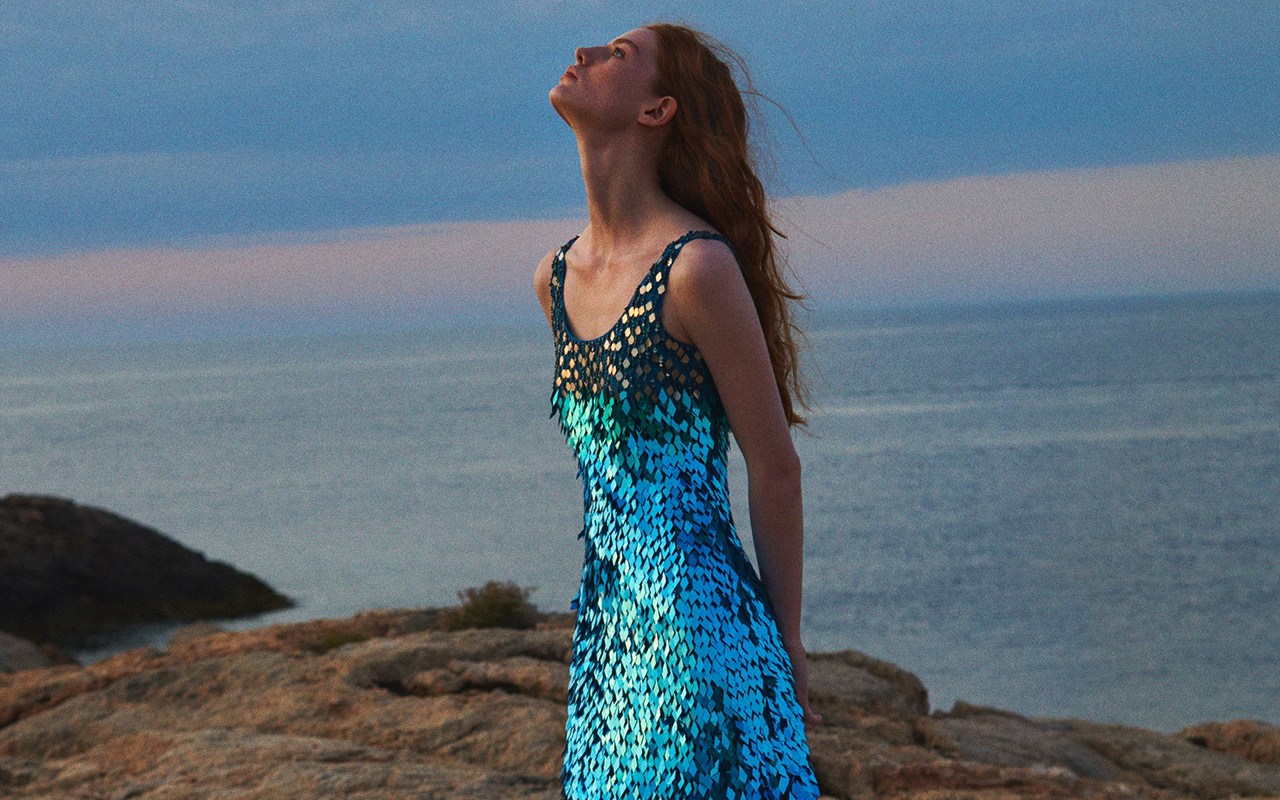
The Little Mermaid is all the rage, pardon the Barbie doll and her barbicore style. And not only its long-awaited remake, released on May 26 in theatres, has won a legion of fans among both children and adults. Now, the aesthetics of these mythological creatures have also seduced the fashion industry, which surprises with the most popular trend of the summer: the mermaidcore with designs that transport us to the depths of the ocean.
The catwalks speak
Fashion’s interest in reflecting the fascinating underwater world is not new. In fact, French designer Marcel Rochas is credited with creating the mermaid silhouette in the 1930s, which was later popularized in fashion circles by Jean Patou. His dress inspired by the aquatic world was published in an edition of Vogue magazine in 1933. Since then, the mermaid style has evolved in various ways and today, designers such as Bottega Veneta or Bluemarine have reinterpreted the image of this mythological creature offering their own vision with clothes that move between the sophistication and the casual.
Investigating more into the current collections we see that the big brands continue to explore the collective imagination of mermaids. For example, for her Resort 2023 collection, Alberta Ferretti gave a very marked nod to these marine creatures by closing her collection with evening outfits full of iridescent blue sequins. In a similar line, Gucci also revealed a striking sparkly dress in green tones and a flowing silhouette, which already predicted the new rise of the trend. Or Tom Ford with a festive collection full of sequins and colours of the sea, like the cut-out design in silver and green that Gigi Hadid wore in a style with curly hair.
The curious thing is that everything suggests that the mermaidcore trend is going to extend throughout 2023 until it permeates the next seasons. Far from being forgotten, in autumn, clothes with the effect of scales and skirts in the shape of a mermaid tail also mark the design of Bottega Veneta. As well as Roberto Cavalli ‘s evening gowns, whose catwalk models sported wavy hairstyles with a subtle wet look and smoky eye makeup. And in 2024, the Resort collections continue to rescue this aquatic environment, as has already been seen in Louis Vuitton with sequined skirts that create optical illusions.

Mermaid designs made in Spain
This global trend also influences Spanish designers. Many of them have proposed creations that are inspired by the shapes of the marine world and follow this mermaidcore aesthetic code. In the last edition of 080 Barcelona Fashion, Anel Yaos presented a collection of an intimate nature that plunges into the seabed to present its hallmarks, marked by romanticism, fantasy and the naïve in pieces of clothing that do not distinguish genders. “Beings without names or appearance, intangible creatures, aquatic myths have been with me since I was a child, arousing in me feelings that range from tranquility to fear, and remind me that I am not alone,” he said backstage at the Catalan catwalk. The ‘Deep 23’ proposal reflects the fluidity of light fabrics such as silk, chiffon and cotton, contrasting with the forcefulness of velvet and neoprene, through a fascinating combination of prints and colours that fit harmoniously with each other.
The Sevillian designer investigates new materials such as latex and towels, and continues focusing on upcycling of bedspreads, vintage buttons and elements that evoke the ocean, such as fishing nets and shells. Furthermore, ruffles, 3D flowers and lace overlays take centre stage. The colour palette of the proposal flows between pastel tones and other more intense ones, such as moss green and black.

Another brand that explores sensuality with feminine proposals loaded with transparencies, sequins, iridescence and lace is Eiko Ai, led by the Barcelona designer Glò Lladó. The firm immerses itself in dreamlike proposals that are inspired by the ephemeral beauty of natural landscapes. According to Lladó, “on this occasion her inspiration lies in the movement of water and marine fauna, such as jellyfish”. With her ‘Underwater Life’ collection, Eiko Ai seeks to establish a connection with aquatic nature through elements such as plants, animals and other organisms, as well as fantastic beings that inhabit the oceans.
To achieve this, the Barcelona firm uses transparencies that allow light to pass through, soft satins in bright tones, ruffles, volumes and vaporous and ethereal fabrics that capture the movement of the waves of the sea. In addition, the pearly tones present in her garments emulate the scales of mermaids, thus completing the marine inspiration of her collection.
Following the latest trends closely, the large fashion distributors have not wanted to miss the opportunity to keep the aesthetics of these fascinating marine creatures on the crest of the wave. Zara kicked off the new season with an editorial dedicated to modern mermaids, presenting garments that have been best sellers. Among the proposals are sequined tops, satin skirts and a silver dress that enhances the feminine silhouette. In the middle of the sales season, the Inditex flagship continues to bet on mesh fabrics with small jewel inlays and sequins of different sizes in blue and metallic tones.
At Gratacós we also have an assortment of shiny fabrics that could follow the percepts of the mermaidcore trend. Find our most premium sequins here with different sizes, shapes and spectacular multicolour designs.

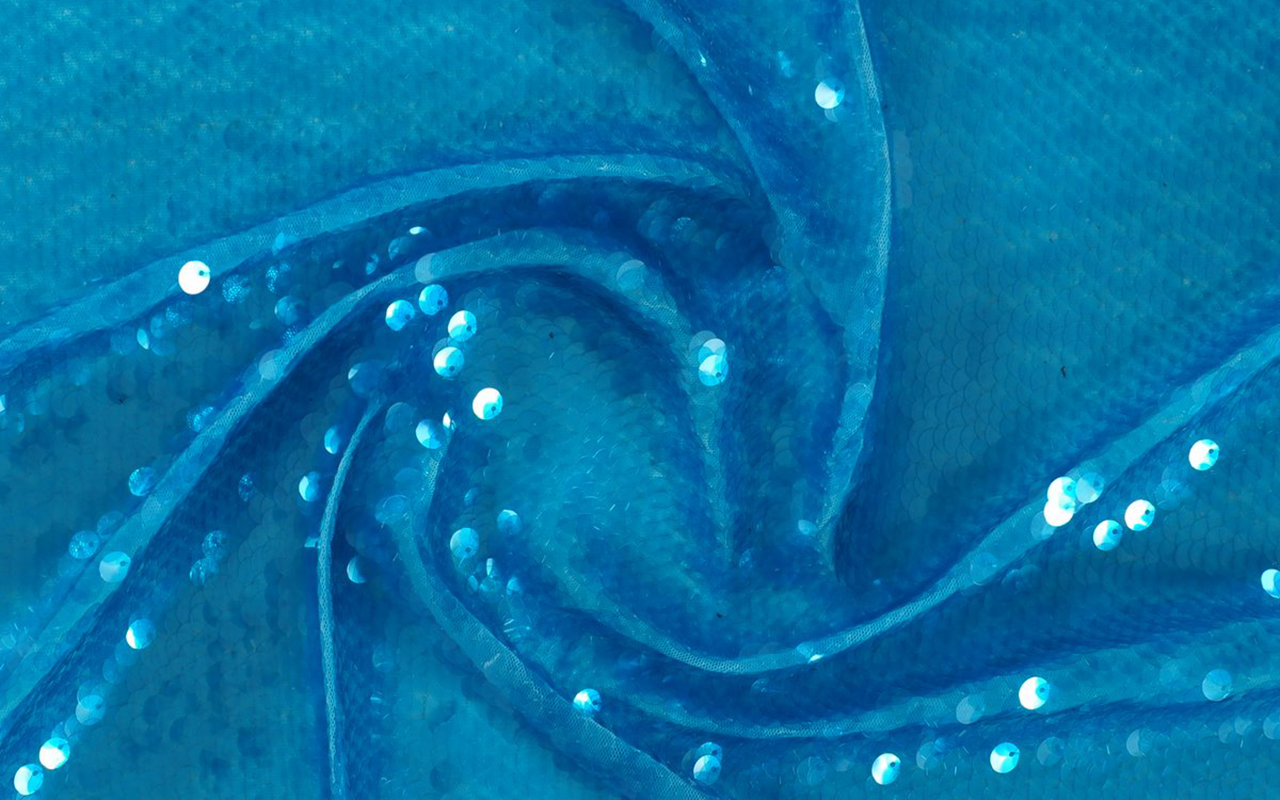



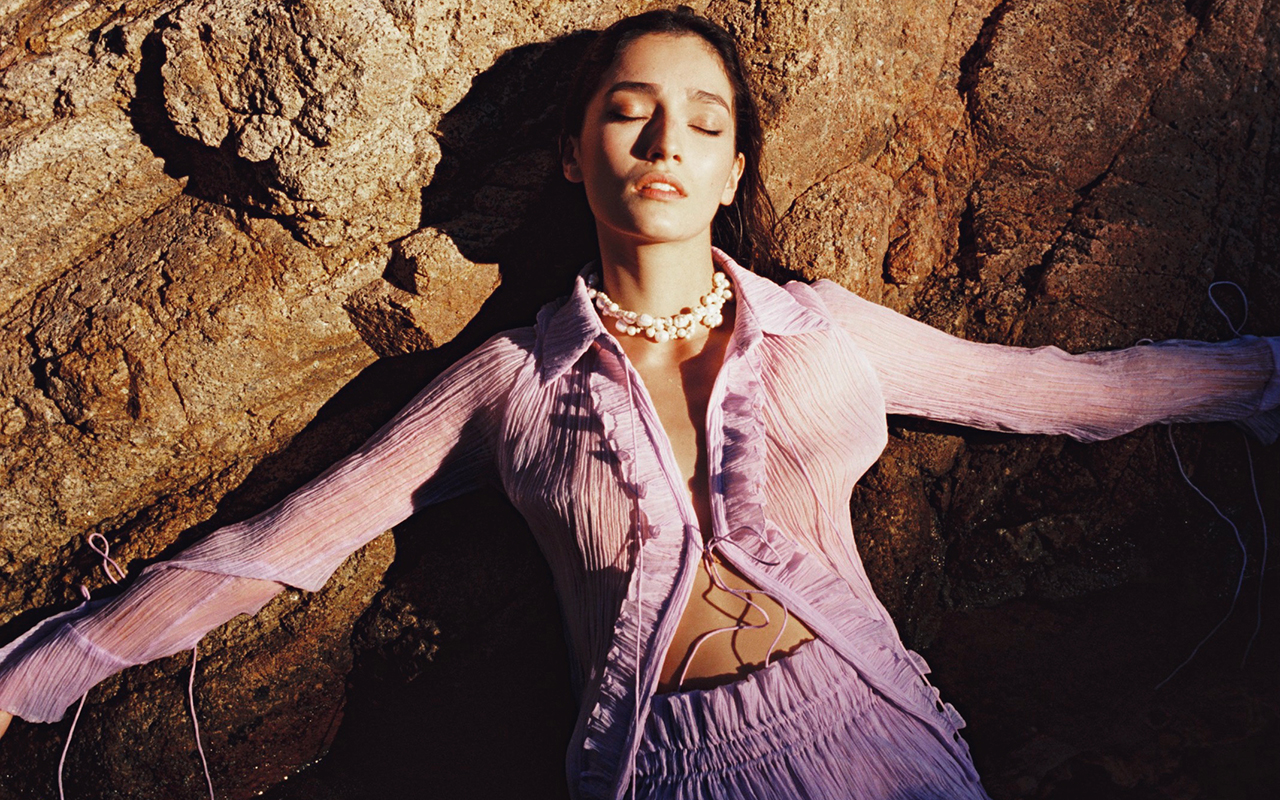

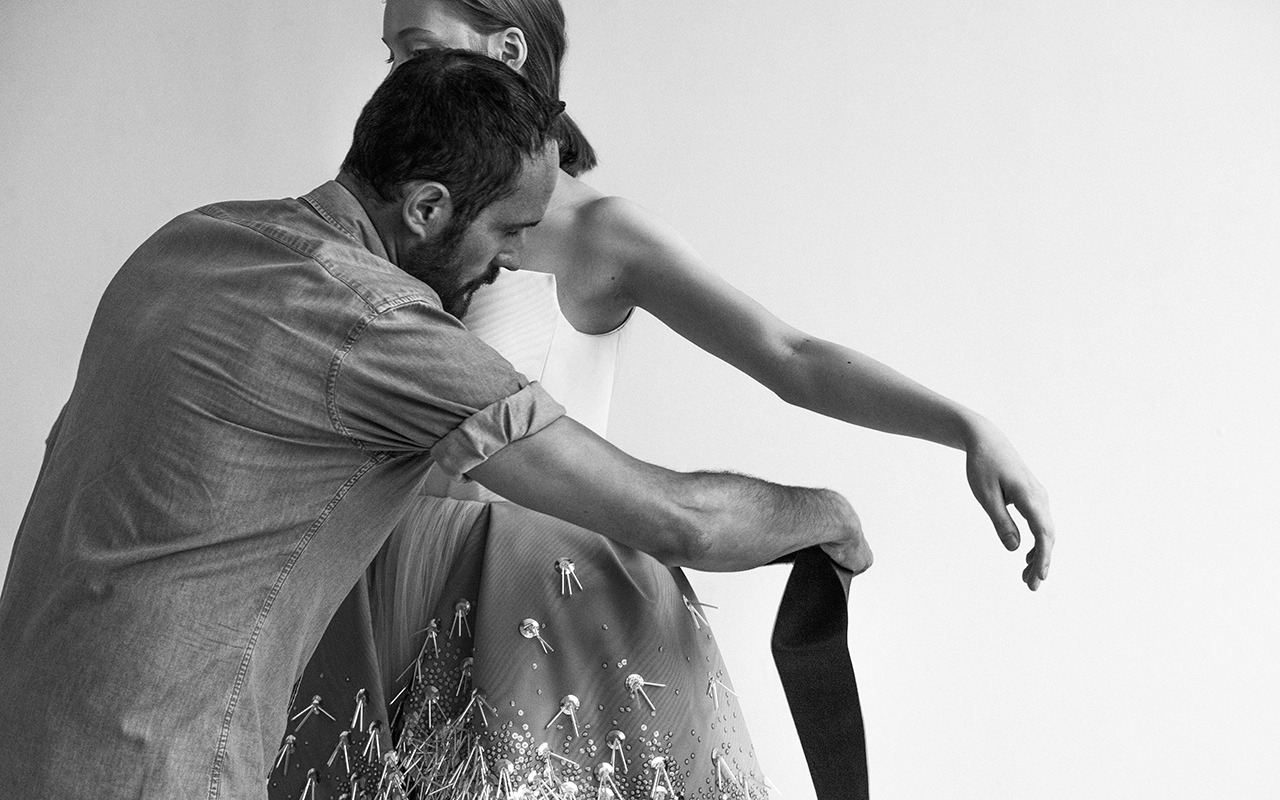 Protrait of Josep Font by Javier Biosca. Museo Cristóbal Balenciaga
Protrait of Josep Font by Javier Biosca. Museo Cristóbal Balenciaga
 Josep Font has everything to be a fashion legend -a category that places him in the firmament of needlework stars whose legacy endures over the centuries-. Talented, dreamy, perfectionist and discreet. Unattainable image, architectural soul and persistent work. After spending five years away from the media spotlight once he abandoned the creative direction of DelPozo, a firm that relocated its foundations to relaunch it to international stardom, the Catalan dressmaker is once again in the spotlight. Of course, maintaining its enigmatic aura. It is already known that Josep Font does not like to feed his ego by hitting the headlines.
Josep Font has everything to be a fashion legend -a category that places him in the firmament of needlework stars whose legacy endures over the centuries-. Talented, dreamy, perfectionist and discreet. Unattainable image, architectural soul and persistent work. After spending five years away from the media spotlight once he abandoned the creative direction of DelPozo, a firm that relocated its foundations to relaunch it to international stardom, the Catalan dressmaker is once again in the spotlight. Of course, maintaining its enigmatic aura. It is already known that Josep Font does not like to feed his ego by hitting the headlines.
Now, the Cristóbal Balenciaga Museum dedicates the first retrospective to Josep Font. It will be the first focused on a creative beyond the Getaria maestro in a new cycle that the institution is preparing to show the world how Balenciaga’s talent has influenced the work of international creators on a global level.
The exhibition ‘Josep Font. Beauty and restlessness’, is a production of the Cristóbal Balenciaga Museum, and curated by Josep Casamartina i Parasols – director of the Antoni de Montpalau Foundation , in close collaboration with the creator in which they have worked hand in hand for more than a year so that the result was sophisticated but fleeting, without a millimetre of margin of error and paying homage to the silent luxury that the Catalan creator knows how to print so well in his designs.
And why does Josep Font converse with Cristóbal Balenciaga in the same space? This union was proposed because the look of the Catalan designer towards the Basque couturier has not been mimetic but a very personal interpretation based on the study of the volume treated autonomously and independently of the female anatomy, achieving a sublimated and silent sensuality, as well as Balenciaga understood. Simultaneously, Josep Font achieved great technical perfection and in the simple and at the same time forceful treatment of the fabrics, in the architectural construction and in the use of exquisite embroideries, he is also close to the legacy of the master from Getaria. Perhaps like no other contemporary Spanish designer, Font fits in with Balenciaga’s famous concept: “a couturier must be an architect of form, a painter for colour, a musician for harmony and a philosopher for measure”.
Beauty and restlessness
The name does the thing. The exhibition is articulated through a constant premise throughout the career of Josep Font: “behind beauty there is always restlessness”. The Catalan designer believes that beauty, in all its splendor, produces restlessness and even uneasiness, but perhaps for this reason it also generates the energy to continue reaching for it without stopping. The architectural construction, the combination of volumes and the ornamentation of the fabrics are hallmarks of his work. Without forgetting his incessant search for a very personal and constantly evolving feminine ideal, far from stridency and provocations. Josep Font’s style is elegant, refined, but also hypersensitive and ethereal. Based on this idea, the exhibition proposes an agile aesthetic discourse that chronologically reviews the 30-year career, from the beginnings on the catwalks of Gaudí and Cibeles through the fashion shows in Paris, haute couture and finally at the head of Delpozo, the pinnacle of his career. It is made up of 54 pieces of clothing, including coats, street, cocktail, night and bridal outfits; from the Fundació Antoni de Montpalau -which has the main collection of pieces by the Catalan designer- and from various private Spanish and North American collections. The set also brings together some accessories from the two brands, such as shoes, perfumes and headdresses. Beyond the creations, the tour includes emblematic photographs by Joseph Hunwick , Javier Biosca and Ernesto Artillo , as well as an interview with the creator by the Victoria & Albert Museum in London.
 Dress Delpozo. Pic: Alex Iturralde. Museo Cristóbal Balenciaga
Dress Delpozo. Pic: Alex Iturralde. Museo Cristóbal Balenciaga
This anthology especially embraces the work of Font carried out in the first two decades of the 21st century and is structured through three major key periods:
From the beginnings to the consolidation
Josep Font (Santa Perpètua de Mogoda, 1965) studied Architecture at the Polytechnic University of Catalonia and graduated in Fashion Design from the Escola de Disseny i Moda Felicidad Duce, in Barcelona. At the age of 21, he won the Air France Mode Prix award and exhibited at Les Arts Décoratifs . The young designer consolidated his own brand with Luz Díaz in 1987, although they had already enjoyed good recognition in the fashion world for years. Together they created their own language. An aesthetic of sober, austere and refined colours. His inspiration was born from everyday popular clothing, with the use of natural materials, silk, wool and cotton, and a studied and severe pattern. However, in 1995, Font decided to pursue his solo career and at the end of this decade he evolved into a magical and hypersensitive world, with broader colours, luxurious and refined fabrics, spectacular and daring embroideries. This turn in design allowed it to achieve international success in the early 2000s. Years of expansion, awards, shops and parades arrived in Madrid, Barcelona and Tokyo. An ascending process that culminated in three prêt-à-porter collections presented in Paris and four other haute couture collections that were absolutely successful in the French capital.
Delpozo ‘s relaunch
There was a bump in this rise to the top: Josep Font lost his own label in 2011, although for a year, the talented creator began designing anonymously for other firms. However, one offer particularly excited him: the commission to remodel and relaunch the firm of the late Madrid designer Jesús del Pozo. Font re-founded the pillars of the brand with a new name – it would be called DelPozo – and an updated structure and workshops in Madrid, Miami, London, Moscow and Dubai . In the new DelPozo collections , it was appreciated what Josep Font had started in haute couture and would create a new line called impeccable prêt -à- couture , with a rigorous technique and exquisite finishes. Very Josep Font style.
Maturity and international recognition
Josep Font reached his zenith in his stage for Delpozo. Between 2012-2018 he created 19 collections and it is in this full production that the influence of Cristóbal Balenciaga will be most evident. In Delpozo, the Catalan designer will reach his maturity and maximum recognition worldwide through the collections he presented in Madrid, New York, Paris and London, and placed the brand among the favorites of the red carpet and celebrities such as Care Blanchett, Julianne Moore, Keira Knightley or Zendaya , creating trends and marking a milestone in the world of fashion. In fact, Josep Font became the first Spanish designer invited by Anna Wintour to the Met Gala . An anniversary that shows the deep admiration felt by the main fashion gurus for the work of this prodigy with the needle.
Little is told about the last stage of Josep Font. He abruptly left Delpozo when he “fell out of love with the project.” Just like Balenciaga did in 1968, who preferred to leave everything when he saw that his idea of design had nothing to do with the democratization of fashion at the time-if he raised his head right now, we don’t know what he would think of his own brand-. Until then, Josep Font has continued working from the most absolute anonymity and time will tell if he will return to the media spotlight with a new resurgence of himself. Now for the moment, his applauded talent comes to light again in this fantastic exhibition that can be visited until January 7, 2024 at the Cristóbal Balenciaga Museum. A magnificent alliance between fashion, architecture, coherence and integrity.
Exhibition ‘Josep Font. Beauty and restlessness’ Pics: Ernest Artillo y Alex Iturralde. Museo Cristóbal Balenciaga





Sorry, this entry is only available in European Spanish.
 Rahul Mishra’s design from the collection “The Dawn.” Photo: Facebook
Rahul Mishra’s design from the collection “The Dawn.” Photo: Facebook
Inspiration always comes from the most unexpected places, especially in the demanding world of fashion, which is always looking for new things to surprise its consumers with. For some time now, there has been a new object of desire that generates fascination and repulsion in equal parts: mold. Yes, you read that right. Mold, that type of microscopic fungus that helps nature break down dead organic matter, is all the rage for a number of reasons.
This statement is not surprising, because in general, the world of mushrooms seduces with its imperfect aesthetics. It does so through organic forms and natural reliefs that inspire artists and creators. It also connects with a dreamlike and fantastic universe that we carry in the subconscious and that can be revealed in the form of adventures in the forest, as can be seen in books like ‘Alice in Wonderland’ or movies like Disney’s ‘Fantasy’. Mushrooms also refer to the psychedelic fever of the 1960s and 1970s, with their hallucinogenic properties that were transmitted in colourful universes that permeated everything from fashion to music and painting.
Finally, the world of mushrooms also has a sustainable dimension. Thanks to their amazing properties and exceptional versatility, mushrooms have transformed the world of fashion by offering a more conscious and environmentally friendly alternative. We analyze each aspect below:
 Rahul Mishra’s design inspired by mushrooms from the collection “The Dawn.” Photo: Facebook.
Rahul Mishra’s design inspired by mushrooms from the collection “The Dawn.” Photo: Facebook.
Imperfect beauty
It’s self-evident: mold, at first glance, can seem repulsive and unsightly. However, fashion designers have found in this unattractive organism a hidden beauty that manifests itself in its pastel colours, its organic reliefs and its unusual textures. These unusual and unique attributes endow you with a certain aesthetic uniqueness and, therefore, a greater ability to challenge traditional canons of beauty. In a world that seeks perfection, the beauty found in the abstraction of mold becomes a bold and liberating statement, instantly captivating because it connects with nature and the processes of life in an organism that questions and explores ideas about what it is beautiful and good, and tries to reconcile us with imperfection.
 An architectural design by Iris Van Herpen. Photo: Facebook
An architectural design by Iris Van Herpen. Photo: Facebook
In the crosshairs of avant-garde designers
Fashion designers have embraced the innovative aesthetic of fungal materials, creating cutting-edge pieces that push the limits of creativity. Thus, the abstract patterns and irregular, velvety patches of mold have been translated into striking prints and embroidery on garments. Various designers have experimented with dyeing and printing techniques to create mold-like effects in their collections. In addition, the organic shapes of the mold have influenced the silhouettes and cuts of the garments, providing a sensation of fluidity and movement.
For example, Iris van Herpen has explored mold reliefs in her creations on numerous occasions, as well as the underground network and connections of fungi. Her experimental designs often feature three-dimensional structures that mimic the unique shapes and textures of these small, highly regenerative organisms.
For his part, Rahul Mishra also stands out for his sustainable approach and his use of artisan techniques. In his collections, the Indian designer has incorporated embroidery and appliqués that evoke mold relief, creating interesting visual effects and surprising textures. Known for his edgy aesthetic, Alexander McQueen has explored the world of mold in his iconic “Plato’s Atlantis” collection. The organic reliefs of the mold were translated into prints and textures on her garments, providing a sense of mystery and surrealism. Gareth Pugh has also turned to mold for inspiration, creating garments with volumes and textures that evoke his distinctive aesthetic. In addition, the French designer Marine Serre has incorporated mold into patterns and textures in garments with a futuristic and avant-garde aesthetic.
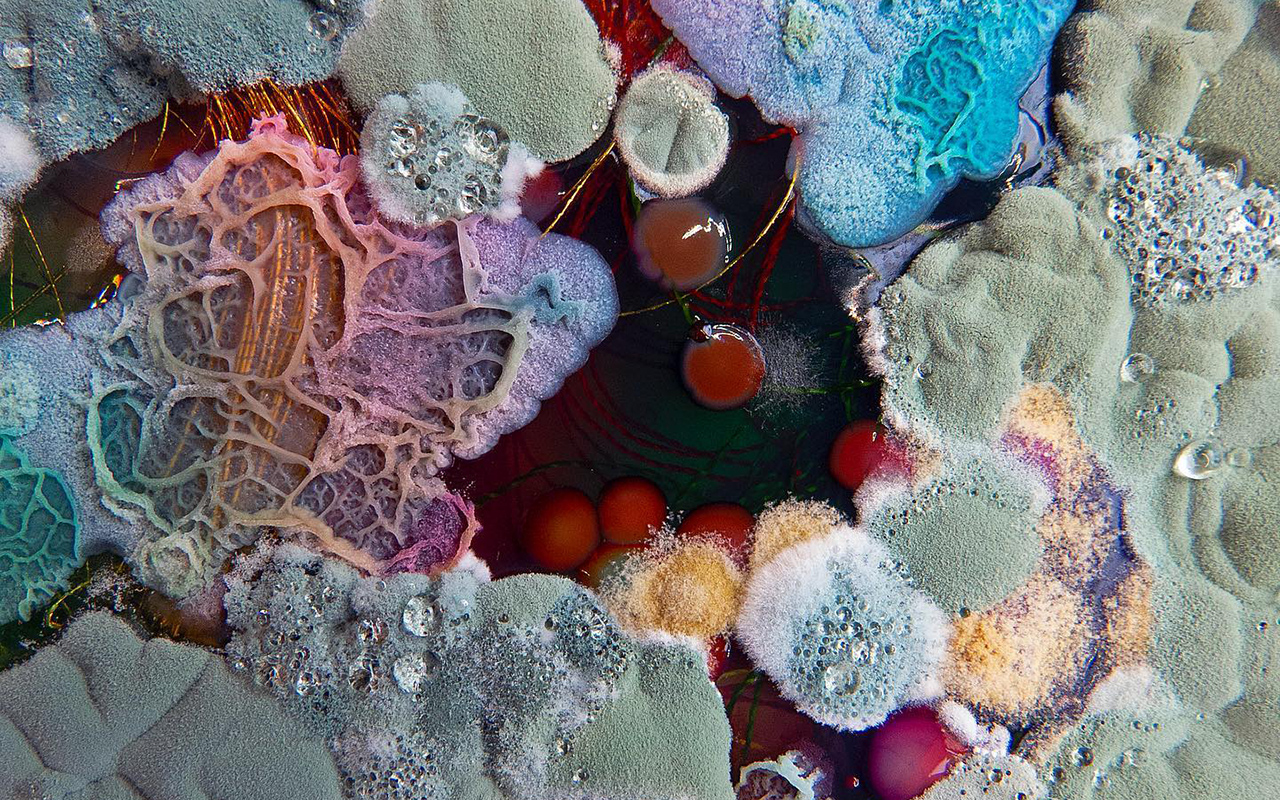 The artist Dasha Plesen works with microbiology. Photo:Facebook
The artist Dasha Plesen works with microbiology. Photo:Facebook
Applications in the beauty industry
In the beauty industry, which is always on the lookout for new trends, mushrooms have also emerged as a powerful source of inspiration and have, in turn, become active elements in beauty products, thanks to their incredible versatility and skin benefits.
Cosmetics has been one of the fields most impacted by the incursion of fungi. These organisms have moisturizing, antioxidant, anti-inflammatory, and regenerative properties, making them star ingredients in skin care products. Mushrooms, such as reishi, shiitake, and cordyceps, are used in serums, creams, and masks to provide noticeable benefits, including improving skin elasticity, reducing signs of aging, and promoting a radiant complexion.
In addition to their benefits for the skin, mushrooms have also made their mark in the world of perfumery. Some species, such as truffles and mushrooms, have characteristic and sophisticated aromas that have been used to create distinctive notes in perfumes and fragrances. These fungal ingredients bring a unique, earthy dimension to olfactory compositions, adding a sense of mystery and elegance to scented products.
The influence of these tiny living organisms has also extended into the world of creative makeup, where designers and brands have found inspiration in the hues and textures found in nature’s mushrooms. Eyeshadow palettes inspired by warm, earthy tones, nail polishes that mimic the subtle colours of wild variants, and makeup products with velvety textures that resemble mold reliefs are the order of the day.
 An artistic creation by the pastry company Frostedhag. Foto: Facebook
An artistic creation by the pastry company Frostedhag. Foto: Facebook
A sustainable revolution
Mushrooms offer an ethical and sustainable alternative to animal leather, as they can be grown under controlled conditions and without harming the animals. Being a renewable and biodegradable source, materials of fungal origin reduce the environmental footprint of fashion, without sacrificing luxury or quality. Materials derived from mushrooms possess unique properties that make them ideal for use in clothing. The mycelium, the fungus’ network of filaments, can be grown and manipulated to create a variety of textures, densities, and colours. Additionally, these materials are lightweight, flexible, waterproof, and breathable, making them a versatile and comfortable option for garments, accessories such as bags, and footwear.
One of the pioneers in introducing the fungal world into her creations has been Stella McCartney, who has incorporated a bag made with Mylo, a leather-like material made from mushroom roots. Later, she launched a sports outfit made from this material. But it was not the only one. Firms such as Adidas or Hermès have also begun to use biodegradable materials made with fungi that are transformed into sustainable fabrics, standing out for their softness and flexibility, offering a more conscious and environmentally friendly alternative. In addition, the ability of fungi to degrade naturally at the end of their useful life contributes to closing the materials cycle and reducing environmental impact.
For all these reasons, the mushroom revolution has only just begun and these organisms are part of the sustainable change that is taking place throughout the world of fashion. As the sector moves towards a more ethical and environmentally friendly industry, mushrooms are making a lasting mark as an innovative and promising alternative.





 Photos: Pirelli / FotoNostrum Barcelona
Photos: Pirelli / FotoNostrum Barcelona
Feminine beauty has undergone a historical change in its conception and representation over time, and especially in the last half century. If we talk about beauty portrayed, the famous Pirelli calendar has become a tangible reflection of this transformation, being an everyday object that has played an important role in the representation of women in the world of fashion and photography.
Known for its iconic and sensual images that decorated mechanical workshops, garages and truck cabins in its early days, the Pirelli calendar has evolved over time to reflect social and cultural changes in the perception of femininity and the empowerment of women. . Now, the FotoNostrum gallery in Barcelona exposes this evolution by presenting the largest retrospective ever held of the iconic almanac of the renowned tyre company.

Beauty narrated by the best photographers
Under the title of ‘ L’Eterna Bellezza ‘, the exhibition exhibits more than 450 snapshots captured by 41 masters of fashion photography, who have contributed to making the Pirelli Calendar a legend in the world of photographic art. Masters like Peter Lindbergh, Annie Leibovitz, Helmut Newton, Herb Ritts , Paolo Roversi , Mario Testino , Steve McCurry, Bruce Weber, Patrick Demarchelier and Richard Avedon , among others, have portrayed over the years the sensuality of women, including models such as Gisele Bündchen , Naomi Campbell, Cindy Crawford, Gigi Hadid and Kate Moss; actresses like Monica Bellucci, Sofia Loren, Laetitia Casta, Jessica Chastain , Penélope Cruz, Uma Thurman , Kate Winslet , and Robin Wright, and singers like Cher, Rosalía, and Patti Smith.
Beyond the sensuality that becomes evident in some cases through the nakedness of the body, what draws attention in the exhibition is the change in gaze. In this sense, ‘ L’Eterna Bellezza ‘, protected by Amadeo M. Turello , Italian curator and preserver of the Pirelli Collection since 2015, has not wanted to ignore all the stages of the Pirelli calendar, from its beginnings in 1964 to 2022, through images that show everything from nudes where the The models’ bodies are presented explicitly as an advertising claim, as well as other more evocative images with messages of vindication of feminine power, which go beyond mere eroticism.
The images shown not only reveal the poetics of individual authors on the female body, they also constitute a reflection of society, aesthetics and the arts in the last 60 years. Thus, the exhibition reflects how the photographic language has evolved over time, highlighting other aspects such as fashion and pop culture of each era.

From object to subject
The Pirelli calendar was first launched in 1964 and has become a symbol of beauty, style and elegance. A leading photographer on the London scene, Robert Freeman, who was a personal friend of The Beatles, was commissioned to create a “beautiful calendar” and had complete creative freedom to do so. This talented photographer selected representative models of the time and took them to the beaches of Mallorca for a cheerful and informal shoot that captured the essence of that moment marked by an emerging counterculture and the sexual revolution.
At that time, calendars with images of women already existed and were used as a marketing tool in the automotive industry. Pirelli wanted to give his celebrated almanac a more sophisticated image and, in his quest for good taste, partnered early on with leading photographers of each era to provide their artistic vision of female beauty. The first calendars caused a sensation, but despite the change, they still reflected old stereotypes: women in pin-up poses displayed their bodies as objects of desire.
As time progressed, Pirelli changed its approach and adapted to the new changes, celebrating values such as diversity, talent, individualism and authenticity to portray a beauty that goes beyond the purely aesthetic and focuses on the personality and the way of being of the woman. In the 21st century, the Pirelli calendar has challenged traditional beauty canons and has captured the essence of successful women in various fields, such as music, cinema, fashion, sports and activism, promoting a more inclusive and empowered vision. of women in society.

The woman also as creator
Women are the absolute protagonists in the history of the Pirelli calendar, but they have not always been in the spotlight. The tyre brand has highlighted the role of women as creators and protagonists in the world of fashion and photography, providing a platform for female photographers to express their artistic vision and talent. This has been demonstrated by photographers such as Sarah Moon, Joyce Tenneson and Annie Leibovitz, who has worked twice for Pirelli.
The latest signing for the creation of the famous calendar has been Emma Summerton , who has been inspired by the classic figure of the muse to vindicate the role of women as creators. For the Australian photographer, the conception of beauty transcends faces and bodies, and has given the models participating in the calendar, such as Bella Hadid, Cara Delevingne or Ashley Graham, an artistic role linked to the power they represent in life real. Thus, in a dreamlike setting with a great charge of fantasy and ornamental precision, the ” Summerton muses ” are presented as authentic warriors, queens, activists or writers in the 2023 edition of the Pirelli calendar.
Precisely, some of these fresh new images can also be seen in the retrospective of the Pirelli calendar, which will be open to the public until the 30th July at the FotoNostrum gallery in Barcelona.
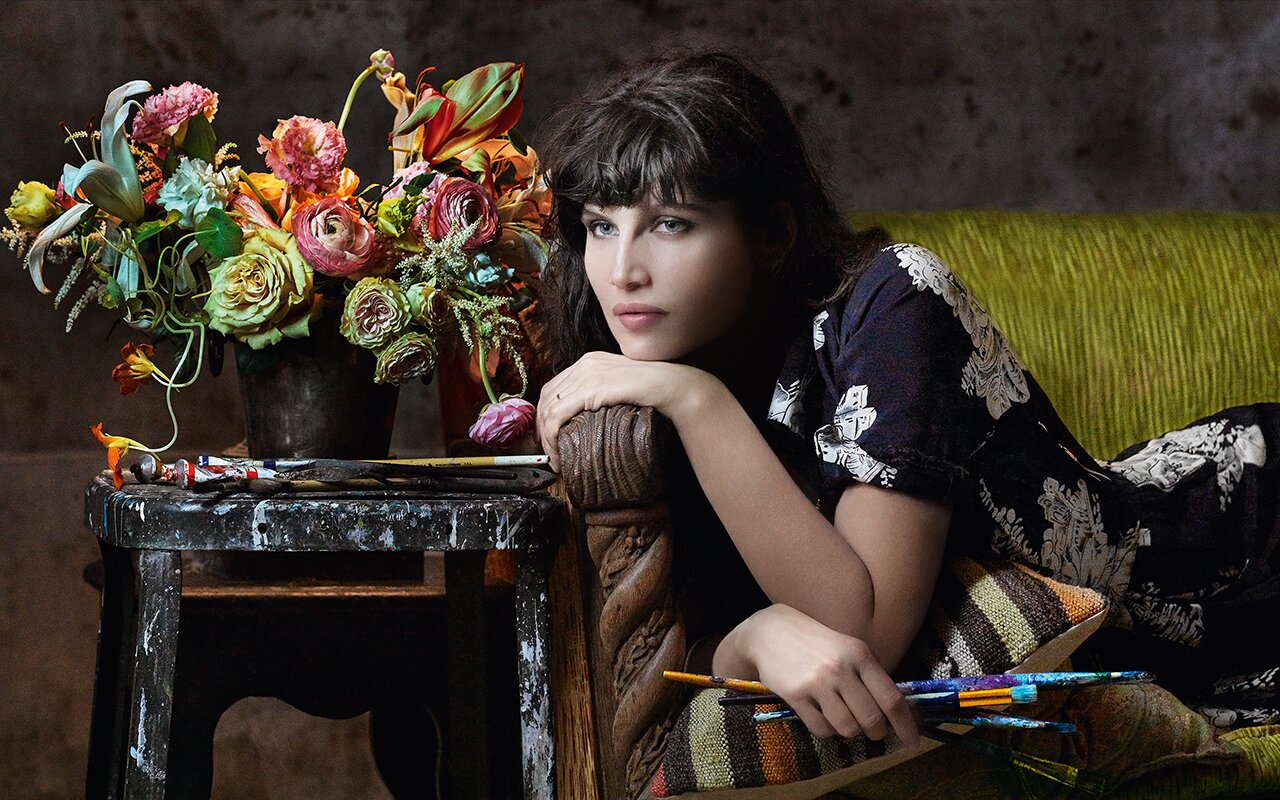





A new edition of the Moritz Feed Dog is back. The contest dedicated to documentary film about fashion that takes place every year in Barcelona and this time, recovers its usual date welcoming spring with a new assortment of novelties in its programming. This festival is special for several reasons. Firstly, because it explores the universe of fashion in all its facets, giving a transversal vision of the sector: the positive values that it promotes, such as beauty, talent, identity or fun, among others, with those who are less friendly than they obscure the fashion industry and question its impact. This year the critical look focuses on essential values such as diversity, honesty, sustainability and animal abuse. Second, the Moritz Feed Dog specializes in documentary, a narrative genre that allows genuine stories to be told based on real events and that appeal directly to the viewer, expanding their mind towards a voracious industry that can be talented and creative, but also ambitious, irresponsible and cruel. The contradictions of fashion that are still a mirror of our society. For all this, the festival constitutes an idyllic environment where views are expanded, opinions are generated and debate around the fashion business is encouraged.
In this seventh edition that will take place from 22nd – 27th March at the Aribau cinemas in Barcelona, the Moritz Feed Dog has prepared a particularly careful programming: premieres, classic documentaries and films loaded with content with genuine stories. Also add that in the digital sphere, the fashion documentary film festival has partnered with CaixaForum +, the streaming platform of culture and science of the La Caixa Foundation that will issue various films free of charge in April, after Easter.

A memory to the designers who are no longer here
The seventh edition of the Moritz Feed Dog Barcelona kicks off with a retrospective of one of the greats: Azzedine Alaïa (1935-2017). The Franco-Tunisian couturier was known as the sculptor of fashion because he was capable of modeling human figures, using all kinds of fabrics. Alaïa was an outsider who broke the system with the help of his talent, his group of unconditional supporters and his devoted gaze towards women. Paris loved him, fashion loved him and women continue to dress him. Clients as diverse as Greta Garbo and Grace Jones, Kim Kardashian and Michelle Obama continue to be loyal fans of Alaïa . This documentary offers an exciting portrait of the life of the couturier. An outstanding piece by director Olivier Nicklaus to whom the festival pays tribute by exhibiting a selection of his most representative works: “ AntiFashion ”, “ Apocalypse Mode ” and “ Go Global”.
The Moritz Feed Dog commemorates the talent and unique personality of Vivienne Westwood , the queen of punk, with two titles that span her career as a designer and activist from its beginnings to her most recent work. The festival also recovers the figure of Gianni Versace offering a new vision of his career. This time, it is the male models who walked the runway for the firm in the eighties, who recall their professional and personal relationship with the designer. Finally, a documentary made and produced in Barcelona stands out, which rescues the multidisciplinary creativity of Toni Miró , one of the key designers in the history of contemporary Spanish fashion. Through his television interventions, the personality of this enigmatic Catalan talent is portrayed who walked the international catwalks in Paris and Milan, and was one of the first couturiers to incorporate anonymous people of all ages into his shows. Rigor, neatness and ease were the hallmarks of his brand, created in 1976.

The prism of fashion
Although everything revolves around the fashion industry, you don’t have to be an expert in the field to view the documentaries proposed by the Moritz Feed festival Dog. In its programming, suitable for all audiences, audiovisual pieces that offer a multidisciplinary vision through more personal perspectives and differentiated themes also stand out. From the transformation of men’s fashion and its relationship with men in “ All Man: The International Male Story ”, to an intimate piece that portrays the beauty universe of photographer Gian Paolo Barbieri in “ L’Uomo e la Belleza”, or a work has also been programmed that transmits the day-to-day life of the fauna that surrounds the sector, either in a backstage as immortalized by “Fashion Babylon ” or the not so idyllic life of an influencer teenager in “ Girl gang ”.
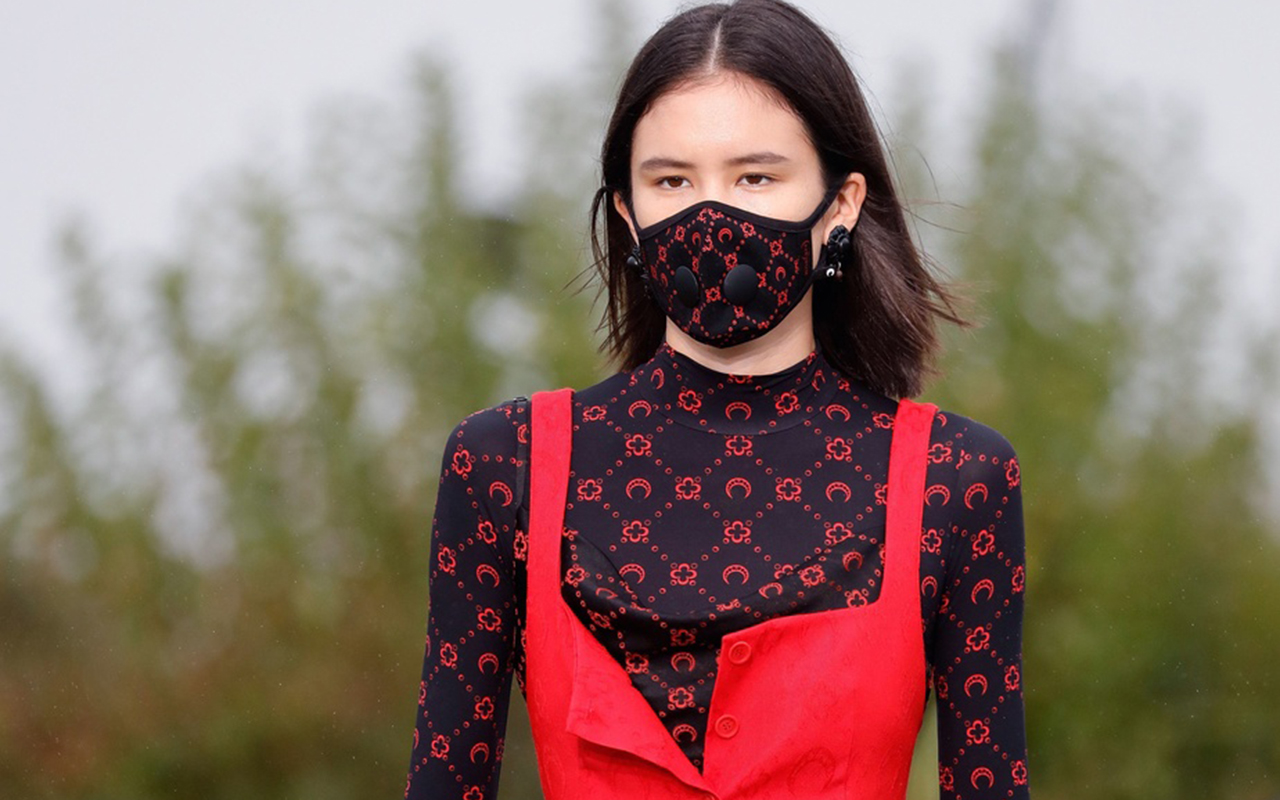
The other side of the industry
Fashion has its own shadows and the Moritz Feed festival Dog reveals them shamelessly. “Fashion Reimagined ” represents a manifesto on the sector’s impact on the environment through a small cult London firm: Mother of Pearl. In “ Wings are not for sale” the object of criticism is the fast fashion from the point of view of sociologists, activists and workers from the industry itself. The hottest topics are also reflected in “ Apocalypse Mode ” by Olivier Nicklaus , but this time, the subjects of these opinions are different generations of designers such as Agnès B, Marine Serre, Karl Lagerfeld or Alessandro Michele. Lastly, “ Slay ” brings to the table a thorny issue: animal abuse in a denunciation documentary that shows raw stories of abuse around the world. This audiovisual piece, which shows the dust under the rug, stirs consciences to demand a greater commitment from brands to animal welfare.

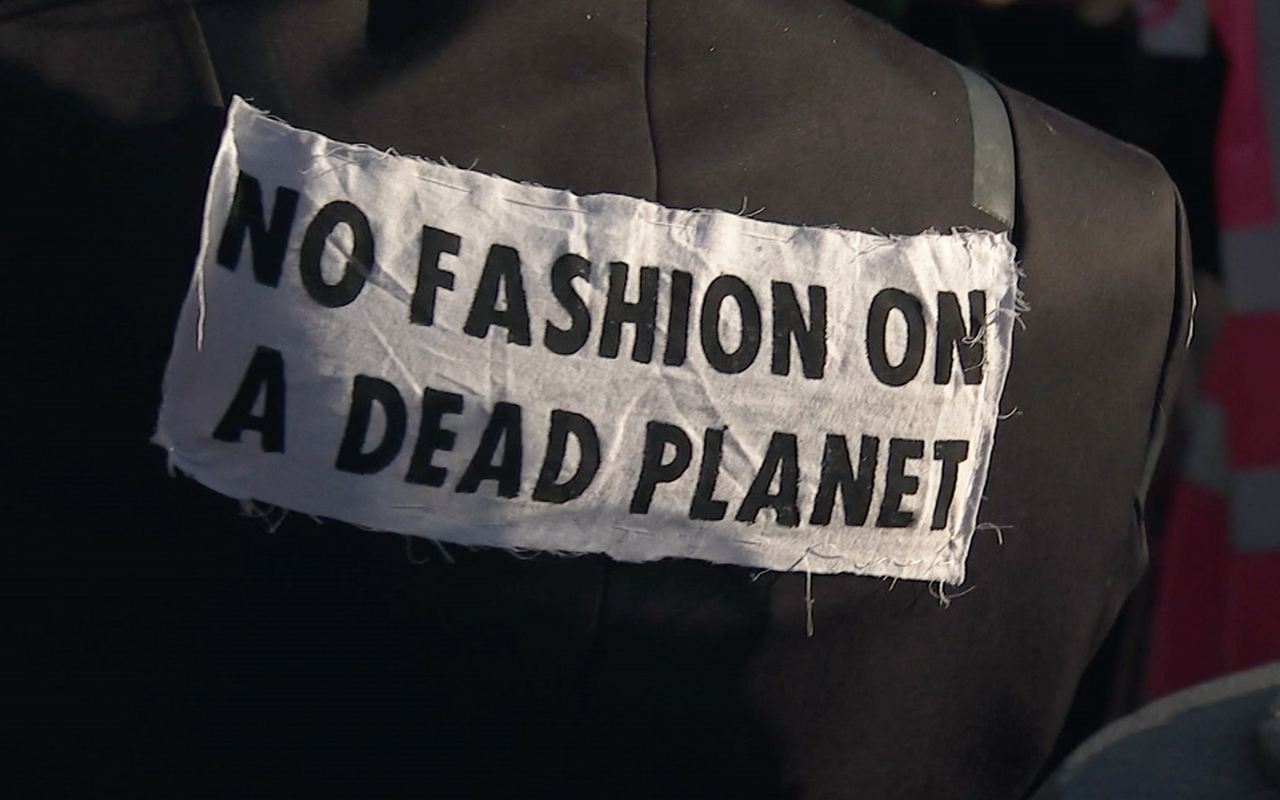
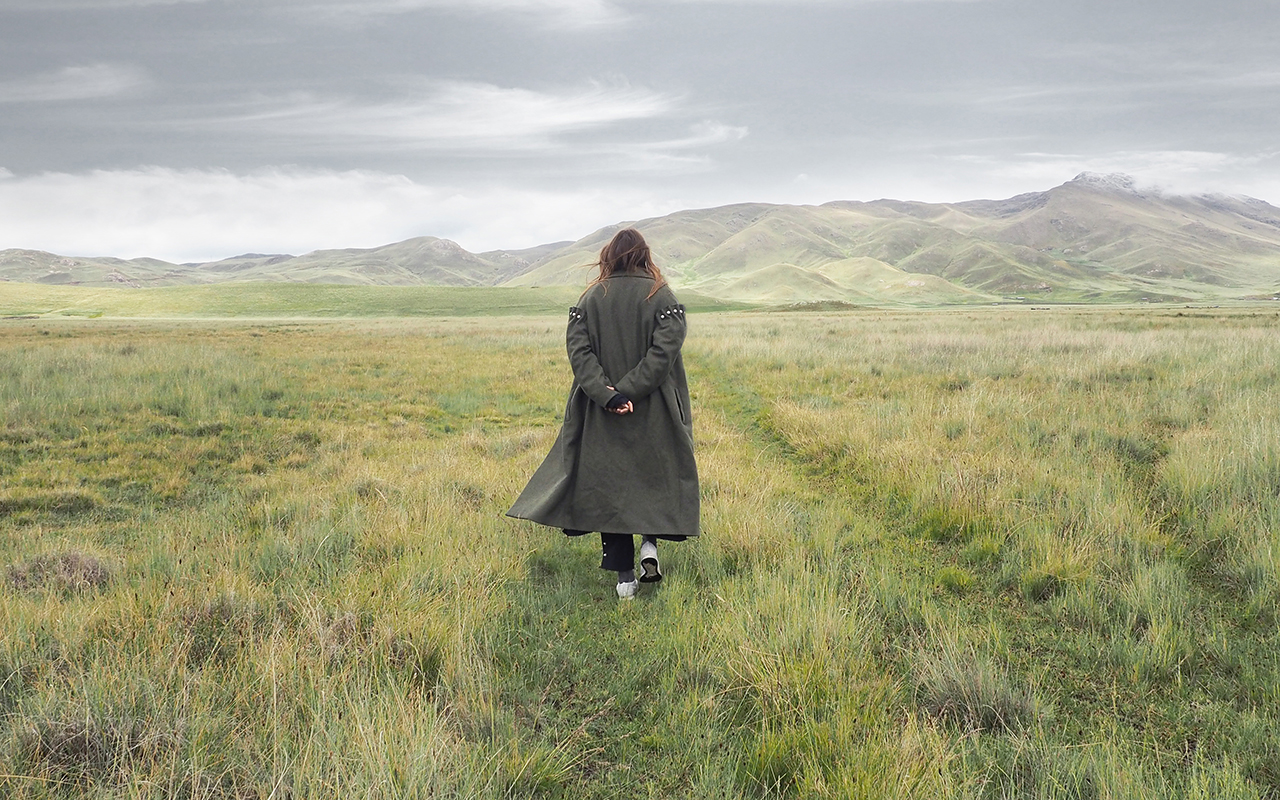
Moritz Feed Dog festival tickets can be found here . Make room in your schedule.
Sorry, this entry is only available in European Spanish.

Egypt is once again in the spotlight of fashion. The celebration of the 100th anniversary of the discovery of the tomb of Tutankhamen and the awaited opening of the Grand Egyptian Museum scheduled for 2023, which hides the greatest treasures of the pharaohs in front of the pyramids of Giza, have positioned it as a desired destination that seduces by its thousand-year-old patrimonial legacy, its latest cultural offerings and some proposals for authentic luxury accommodation that revalue it on the international map.
The awakening of an icon
The enigmas of Ancient Egypt continue to fascinate the population and its power of attraction could not go unnoticed in the world of fashion. Connecting with the present, November 2022 marked the centenary of the discovery of the tomb of the young pharaoh in the Valley of the Kings. After a surprising discovery of a tomb with intact seals, Tutankhamen woke up from a slumber of more than 3,000 years and revealed unimaginable riches that helped to further understand the majesty of the reign of the pharaohs.
This discovery in 1922 came at a very opportune moment in history, after the First World War at a time of economic boom, and it quickly became a real sensation for several reasons. To begin with, it was a well-preserved royal mummy, which by its size was that of a child who had ascended the throne at a very young age. Unimaginable treasures were found next to the grave, such as the golden coffin and the famous funerary mask of Tutankhamen, which represents ancient Egypt like no other symbol in the popular imagination. A world icon oblivious to the passage of time.

The influence on the fashion of the 20s
Tutankhamen marked style leaving his mark on the fashion of the Roaring 20s. One of the treasures found in the tomb was the most complete and best preserved collection of clothing that has survived from Ancient Egypt. It included tunics, skirts, hats, children’s gloves and sandals in paper, rattan and leather. Anecdotally, these last two accessories were made contemporary replicas in the United States that sold out in department stores within a few weeks of being reproduced. Egyptian-inspired designs were also all the rage at the time, copying fitted silhouettes, straight and narrow dresses or the characteristic draping that hugged the hips and fell in the front. Before the discovery, the Egyptian style was an intermittent trend, like others that were rescued from the end of the 19th century such as Oriental inspiration or Edwardian fashion during the first decade of the 20th century. Garments and accessories with related motifs such as lotus flowers, hieroglyphics or pharaohs had already been used on their carriages on occasions, but they were not as direct or explicit inspirations as those that emerged from the designs from Tutankhamun’s tomb.
Other aspects that influenced the fashion of the 20s was the colour palette associated with the treasures of the young pharaoh. The red and brown tones of the papyri and mummies, the blue lapis lazuli in Egyptian divinities that contrasted with the powerful gold as a symbol of light or the white of the clothing. Also the fabrics: natural linens and cottons with little opacity in draped silhouettes that contrasted with the ornamental elements. In fact, the jewelry industry surrendered at the feet of Tutankhamen reproducing multiple bracelets, rings and necklaces worked in crystals and semi-precious stones. There was also no lack of ornamental elements that made reference to Ancient Egypt such as birds, beetles or the solar disk that represented the divinity Ra. The geometric motifs and the tendency to wear two or more bracelets on the same arm also arose from seeing the treasures of the child pharaoh exposed. The pioneers in this type of design were Lacloche, Van Cleef & Arpels and Cartier.
The Western world was already fascinated by Egypt long before the discovery of Tutankhamen’s tomb: Verdi’s opera ‘Aida’, Tiffany’s Cleopatra-inspired jewellry or the costumes of the dancer Mata Hari, who found her inspiration on a trip made o the country of the pyramids, are two good examples of this attraction.

A new rise
The fever for Ancient Egypt has not ceased in fashion and its presence has been intermittent over the last 50 years. For example, in the 1960s, Egypt mania returned to fashion with Elizabeth Taylor’s portrayal of the powerful Cleopatra. Her beauty, makeup and wardrobe were (and still are) an inspiration for many fashion designers and editorials. Or in the 1970s, a new traveling exhibition of Tutankhamen’s treasures received eight million viewers who were once again interested in the enigmas of Egypt. Various marketing objects were also exploited in the United States: jewelry, household products or small fashion accessories.

Ancient Egypt on the catwalk
The historic civilization has also fascinated the designers of luxury firms who have found in its iconography a constant source of inspiration. From John Galliano in 1997 with a mixture of Egypt with punk aesthetics to the elegance of Karl Lagerfeld for Chanel in 2019, the catwalks have celebrated the splendor of Ancient Egypt with models that rescue the beauty of the female figure and the lavishness of the empire of the pharaohs. Golden fabrics, inlaid precious stones, flowing dresses, muslins, tunics, ethereal capes, embroidered hieroglyphics… each firm has interpreted this suggestive universe over the last few years.
Among all the tributes that have been paid, the one paid by John Galliano when he was in charge of the artistic direction of Dior stands out. The haute couture collection for the spring of 2004 was presented in a show as grand as few can remember. On the catwalk there was no shortage of the most symbolic gods of the Egyptian pantheon, the Tutankhamen mask, the silhouette of the sphinx, fabrics that wrap around the body like a mummy and models inspired by Cleopatra herself. In this unusual collection there was no shortage of excessive volumes , dresses with exaggerated proportions, skirts with a pyramid silhouette, the golden colour, endless organzas and extreme attention to detail that earned it the title of Haute Couture. He also did his own interpretation of this fascinating Alexander McQueen universe in 2007 that focused more on investigating the relationship of Ancient Egyptian religion with the folk culture of British immigrants. In a more moderate way, the designers Bagley Mischka and Zuhair Murad have also been inspired. Also Givenchy in 2016, Balmain and Chanel. Karl Lagerfeld chose the temple of Dendur as the setting to create his own version of Egypt in the pre-fall 2019 collection.
The last proposal that has been exhibited with clear references to Egyptian culture has been just a month ago. Kim Jones , artistic director of Dior Men, traveled to the Giza pyramids on site to present the autumn collection, evoking the colours of the monuments and looking up at the sky to link it with the stars, a common symbol in the historical French firm. A splendid proposal that represents the past, the present and the future of Dior.

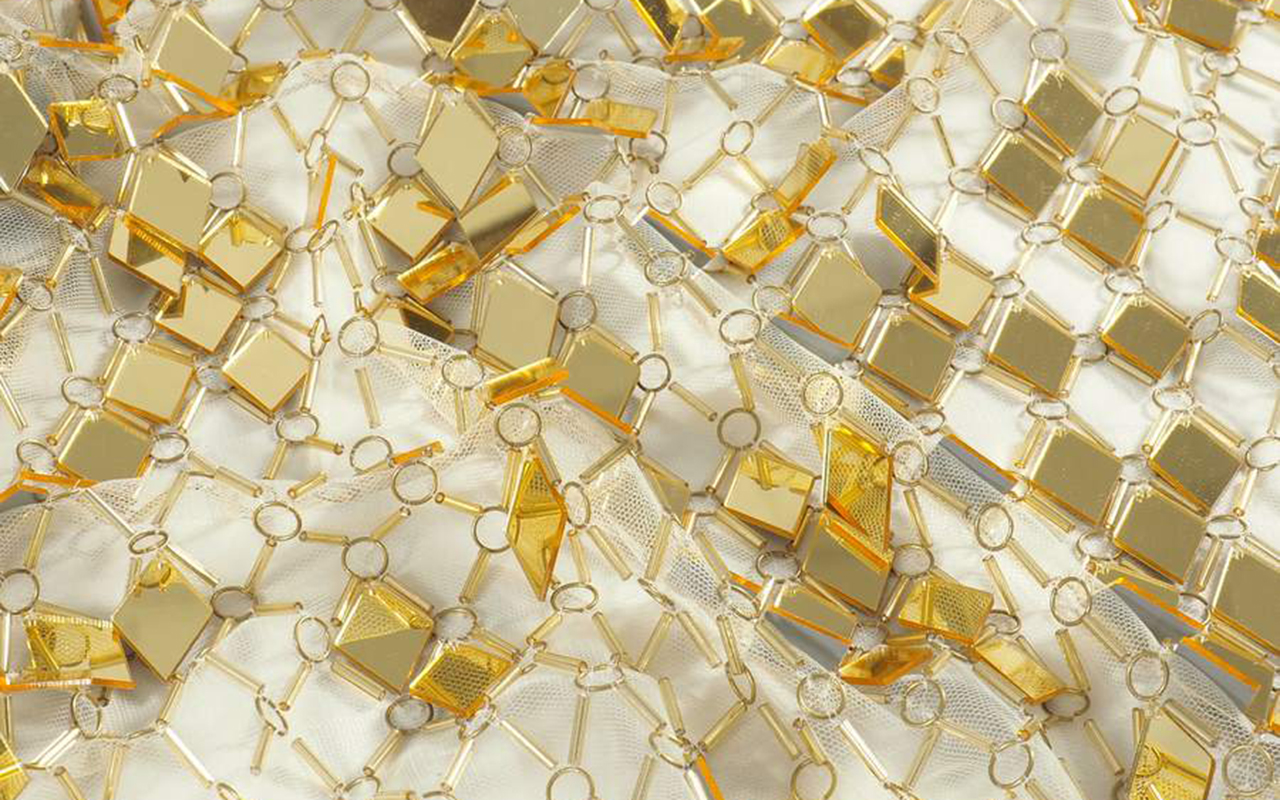











All photos: Facebook Vivienne Westwood
2022 ended with the farewell to one of the emblems of 20th century British design. Provocative, revolutionary, creative and political activist, Vivienne Westwood was a lawless idealist who forever transformed UK fashion. Her revolution was to make visible her aversion to corruption and injustice in the world, as well as to denounce the passivity of youth through clothing. Westwood gave birth to the punk movement in fashion, but also took couture by storm in the ’80s and ’90s; and built a global empire with stores all over the world, a priori antagonistic concepts (capitalism/anarchism) for a transgressor of the needle, but for Westwood there were no limits or labels. Fashion was a weapon and its objective was clear from the beginning: to change the rules of the game, destroy conventions and make the world more just and equal.
The renowned fashion designer died on December 29th at the age of 81 surrounded by her family in Clapham, South London. In a statement from the brand, they assured that Vivienne Westwood “continued to the end with her subversive design, her artistic activities and her activism, to change the world.” Her husband and creative partner Andreas Kronthaler said of the designer: “I will continue to hold Vivienne in my heart. We have been working to the end and she has given me many things to keep going.” Her legacy lives on.

As a child she showed proise
Vivienne Isabel Swire was born in 1941 in the town of Tintwhistle, near Manchester. Her working-class parents encouraged her to do crafts, a skill little Vivienne was extraordinarily good at. She also liked to read a lot and spent long afternoons in the library. As a child she had an enviable self-confidence, believing herself to be an exceptional craftswoman. “Honestly at the age of 5 I could have made a pair of shoes,” the designer said in an interview. Her family moved to North London in 1958. Despite her abilities, the young Vivienne graduated as a primary school teacher, then married Derek Westwood, a young blue-collar worker with a flamboyant mod aesthetic. The first creation, without knowing how to sew, was her own wedding dress, as well as the jewelry she wore.

The influence of Malcolm McLaren
Meeting Malcolm McLaren then changed the peaceful life of Vivienne Westwood. He studied art and shared a class with one of Vivienne’s brothers, he had curly red hair and a face bleached with talcum powder. He called himself the godfather of punk. With an eccentric appearance, McLaren impressed with his creativity and brilliance, at the same time that he offended the older generations and hated everyone, except himself. The attraction to Vivienne was immediate and together they began one of the great creative partnerships in recent UK history. For the young designer, McLaren was an awakening for her: introducing her to art, music, and the transformative power of fashion.

Fashion and punk
In 1970, McLaren became the manager of The Sex Pistols, a group that defined the punk movement. At that time, Westwood had learned the trade in a self-taught way and opened a store on Kings Road in London inspired by the aesthetics of the group. She called it a subversive name: ‘Sex’ with a huge pink sign alerting passers-by: “only the brave enter”. Inside, everything was shocking. The serving staff and the clothing on display were designed to explore the individualism and identity of the wearer. Clothes with studs, chains, zippers, tight leather garments, impossible heels, T-shirts with subversive messages… Everything was designed to shock. “We invented punk,” Westwood stated in her autobiography. In fact, the presence of Vivienne and McLaren was inherently intimidating. They wanted to impress, irritate and provoke a reaction, but also inspire change. Punk was still an explosion in all its magnitude.
McLaren later acknowledged that he was willing to misrepresent popular culture to reduce it into some kind of marketing campaign, but for Westwood, the move ran deeper because she saw it as a youth insurgency against the corruption of the old world order. The British designer believed that fashion and music would channel the anger of young people and bring about change, but later realized that many of them simply ignored global injustice, and with their nose studs and punk rock music the only thing that they did was dance and have a good time.

The jump to the big catwalks
Punk was just one chapter in the legacy that Westwood leaves behind in fashion. The designer took her subversive ideas and stormed the catwalks in London and Paris. Vivienne worked at first alone with a sewing machine at home and used the moulage technique, joining the pieces together and using her own body as a template. She researched the history of fashion, remade it in her own way, and challenged the world of haute couture. An alliance with the generation of supermodels: Kate Moss, Naomi Campbell, Laetita Casta… showing her designs also helped her to position herself and become the leading independent designer in the 1980s and 1990s. The key to Vivienne Westwood’s success was that of not losing her orthodox identity when she moved into the world of fashion shows and ready-to-wear collections with abruptly cut garments, games of semiotics, decontextualized objects, draping… Precisely her subversive style and her transgressive image (her hair was either bleached or dyed orange and extreme makeup), made her one of the most distinctive and original designers in the fashion world. In the early 1990s, Vivienne Westwood built a mini-empire: she opened her own boutiques and produced clothing, footwear, accessories, cosmetics, and perfumes. Even bridal fashion! When Carrie Bradshaw’s character in the mythical series ‘Sex and the City’ wanted a wedding dress, she turned to the famous designer, who by the late 90s had already become a major bridal brand.

The more committed side
For Vivienne Westwood, fashion was a weapon and the message an inseparable part of her aesthetic heritage. Everything had a purpose. The British designer loathed the political class and launched a lifelong crusade to promote individual freedom, rid the world of nuclear weapons and combat the threat of climate change. “Buy less, choose better and make it last” is one of the lessons that still survives in times of climate emergency.
“I don’t want to be underground ,” she used to protest, defending that she wanted to be out of the spotlight to spread her message. She supported numerous causes, donating to the Green Party and becoming a regular visitor to WikiLeaks founder Julian Assange. She even parked a white tank outside the home of former Prime Minister David Cameron at an anti-fracking protest.
Vivienne Westwood was also honoured by Queen Elizabeth II. The late monarch presented her with the Order of the British Empire in 1992 and the designer appeared without underwear. Her Majesty was not amused by this rebellious gesture, but on her own merits she agreed to name her Dame a few years later. And this is how Lady Westwood, godmother of punk, defended to the last breath, her transgressive ideas applied inside and outside of fashion, but above all, maintaining a coherent attitude towards life by questioning, in her own way, the world order and the rules. of the game.
At Gratacós, we pay homage to Vivienne Westwood with a selection of our most irreverent fabrics. You can find them in our online store or in the Barcelona space.








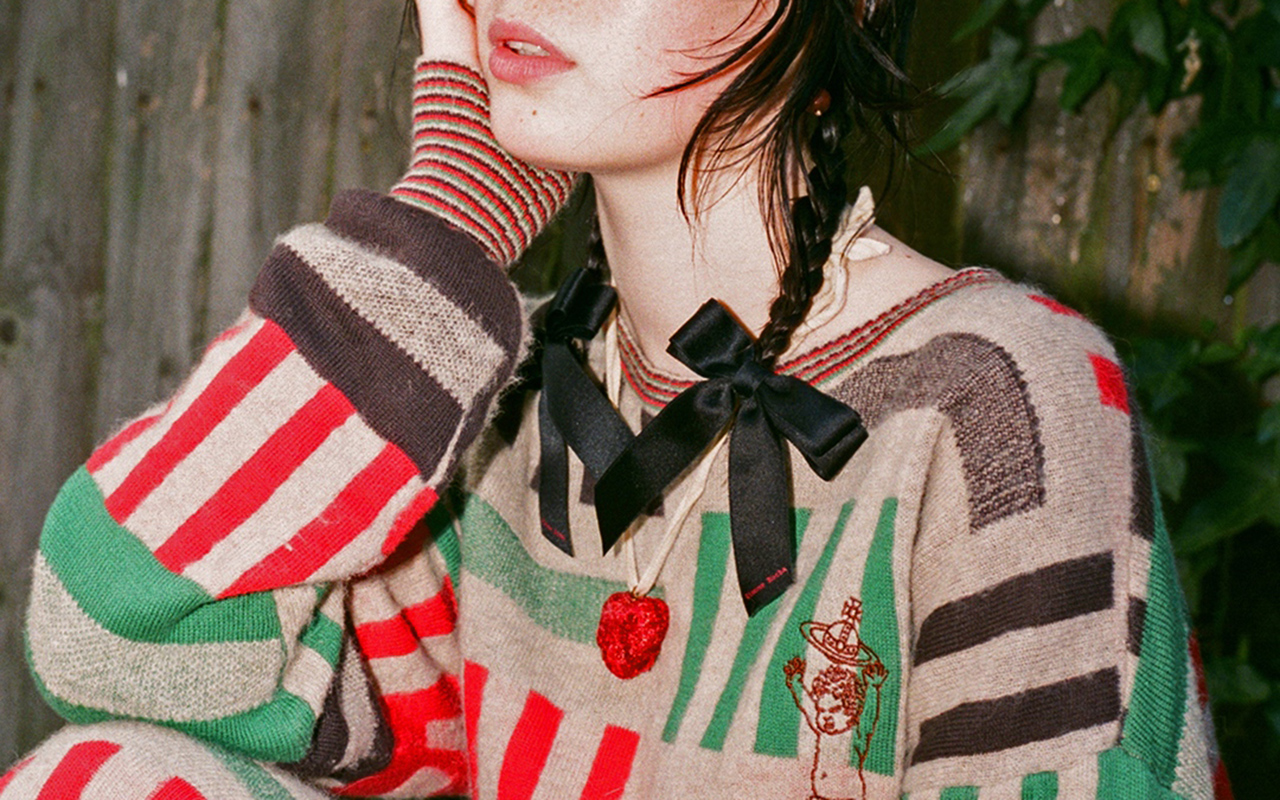

Viernes 30 diciembre 2022

At the end of the year the evaluation lists come out: the best books, the most influential characters, the must-see series, the trends that have marked each season, the new fashionable words that we incorporate into the dictionary… At Gratacós we carry out our particular revival exhibiting the shop windows that have been created at the entrance of our space in Barcelona. In fact, it is nothing new that we bet on creating windows that attract attention. We have always done it and each window represents a new visual letter of presentation because it speaks of who we are and what we do in a creative, spontaneous and current way, using new languages of expression that go beyond fashion.
During this year of return to “neo normality” we have dressed our mannequins with spectacular fabrics from the new season, but we have also had the support of the students of the design schools we collaborate with, the creativity of brands made in Barcelona and some artists linked to Gratacós . All of them have put their grain of sand to build new windows that create that attraction effect to those who come to our physical store. We review them below:
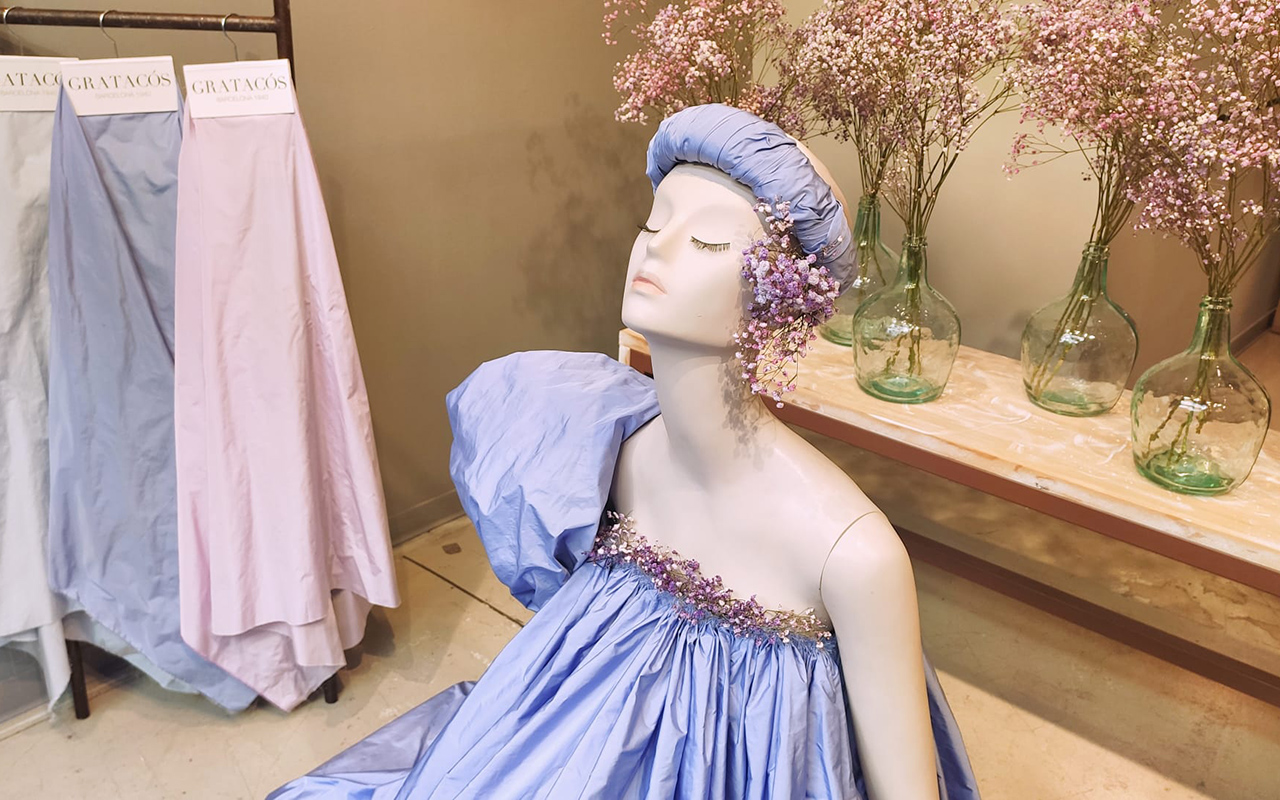
February 2022. Echoes of spring
Winter was short-lived in 2022 and the high temperatures, unusual in February, were unknowingly a foretaste of what would come next and would remain the usual trend throughout 2022, one of the warmest years on record. In the traditionally coldest month of the calendar, we took a look at our shop window betting on the incipient spring that was already rearing its head. The first green shoots, the white and pink flowers of the almond trees and, in general, a new awakening of the flora that we express through taffetas (Picasso) and colour in its softest tones.

March 2022. An arty twist
In March there was an artistic turn towards fashion illustration with the identifiable stroke of Joel Miñana, where his colourful mannequins were the absolute protagonists of the window. Using coloured pencils, markers and geometric lines, Joel interpreted some of the key fabrics of the season in an arty key . This contemporary vision was complemented with cuts from vintage dresses, fabrics from other seasons, and classic drawings that review the history of Gratacós, offering two visions that define our company: tradition with modernity.

April 2022. A book to remember
In the month dedicated to literary culture, we wanted to do our part by paying tribute to a specific book: ‘Nobody knows’ (Planeta, 2022) by Tony Gratacós . A historical thriller about some of the mysteries of the first circumnavigation of the world. The author gives a twist to the figure of the navigator Juan Sebastián Elcano, one of the few survivors of the Magellan expedition in an ambitious story that immerses us in one of the most splendid and fascinating periods in the history of Spain and that hides a secret that has taken five hundred years to come to light. The shop window could not miss some signed copies, roses and a mannequin with an imperishable fabric, the Gingham linen check that is renewed every year without losing its classic essence.
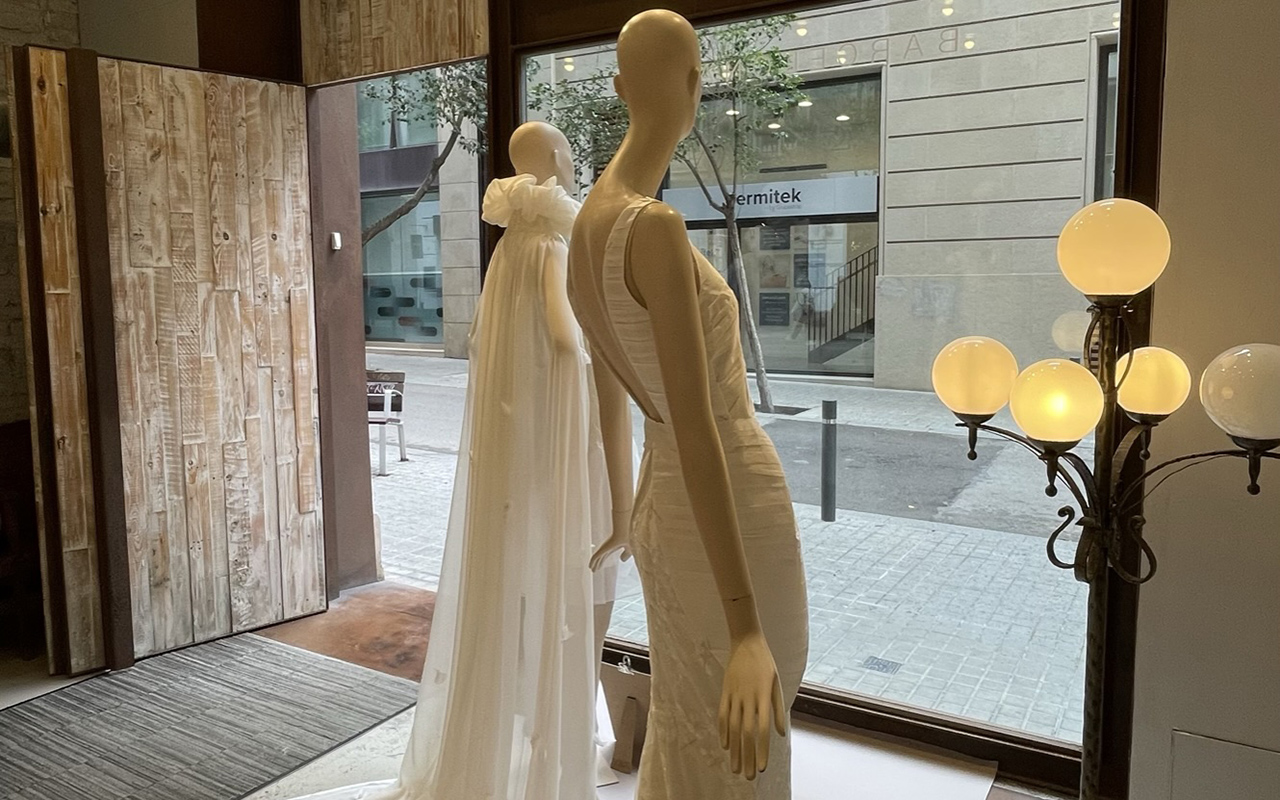
May 2022. The brides of the year
The bridal showcase took place in May this time, making visible the work of the last two winners of the contest IED Barcelona that the school organizes every year through their postgraduate course in Bridal Gown Design. On this occasion, the moulages by Myrian Medina, winner of 2022 and Nicole Claux , winner of 2021. Two wedding dresses, one made of georgette (Danubio) and the other made with mikado on the bodice and sequin embroidery on the tail of the skirt. The fabrics provided by Gratacós together with the unique cutting and sewing technique gave way to one of the most special showcases of 2022.

June 2022. Studio 54 returns
In June we welcomed what would be the longest summer of the 21st century, recalling the disco aesthetic of the 70s. Iridescent materials, reflective crystals and subtle shimmering fabrics to kick off a time full of outdoor celebrations. The bling bling aesthetic was achieved by Joplin Atelier, the Barcelona born firm of Laura and Aida Molano who succeed with their glam rock style , creating feminine and opulent looks in volumes, colours and fabrics. The mannequins wore two looks in lime cotton and orange silk satin combined with pieces made with mirror effect appliqués on tulle as a miniskirt.

July and August 2022. Sales time
The sales were the stars of the holiday months and we showed a selection of our best seasonal fabrics in various shades of pink and ecru: jacquards , prints and embroidery mostly. The shop window recreated a feminine room with a certain air of disorder, through a chest of drawers with a vintage spirit , where sumptuous fabrics sprouted from each of the drawers. A tribute to the carefree divas of classic cinema brought to our land.
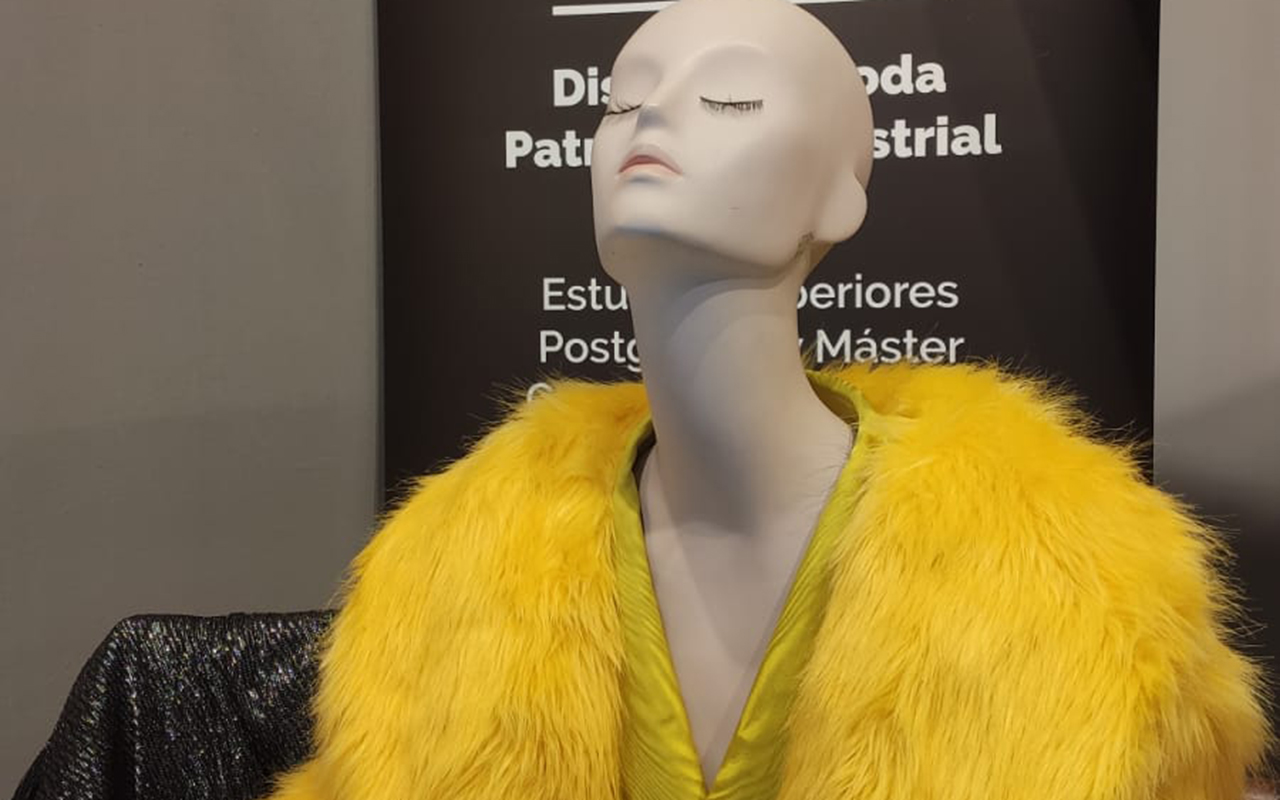
September 2022. Back to school
In the fashion industry, the year traditionally begins in September, coinciding with the change of season, the new catwalk calendar and the most powerful magazines in the world invest in million-dollar covers to compete in sales. This month, the designer Emile Albretch from the ICM school exhibited her latest models through pieces made with different jacquards , knitted with lamé and moiré. The result was an interesting mixing exercise with a colourful result that hooks the new generations.

October and November 2022. Home sweet home
The quintessential autumn months were dedicated to exploring the traditional universe of the home. Sewing, cutting and sewing, leisurely hobbies that require the work of the hands with a dose of creativity, perseverance and patience. From this intimate refuge, the dreams of tomorrow are woven through wonderful fabrics such as wild silk in gold or transparent XXL paillettes.

December 2022. Red Christmas
We say goodbye to the year with a classic tribute to Christmas. Crystal balls that enclose remnants of fantastic fabrics, the traditional nativity scene that reminds us that no matter how times change, there are customs that remain intact over time, and a spectacular mannequin in the centre dressed in red sequins with winter decorations that remind us that winter has already begun, despite being just as atypical as at the beginning of the year. What will 2023 bring us? Regardless of the desires of each one, we await the arrival of new shop windows that will surprise you and invite you to enter our space in Barcelona. Happy New Year!




















































































